As both a solo artist of the highest order and a session ace who has worked with the music world’s elite, Orianthi has succeeded not only because of her immense talent, but also because she knows how to get things done. When Orianthi (Penny Panagaris) was offered a guitarist role on the Alice Cooper tour, she learned 25 of his songs (many quite difficult) in a week—all during a time when she was in the middle of recording her own album.
After a performance at the 2009 Grammy awards with Carrie Underwood, she was scouted by Michael Jackson’s musical director, Michael Bearden, who contacted her on Myspace to audition for Jackson’s This Is It tour (which sadly never materialized due to Jackson’s untimely death). Orianthi got the call while she was in the studio with legendary songwriter Diane Warren, finishing up one last song for her album, Believe. By the next day, she arrived at the audition ready to play Jackson’s hits, like “Wanna Be Startin’ Somethin’,” “Dirty Diana,” and “Beat It.” The latter song featured the late Eddie Van Halen’s virtuosic solo, which she had to play onstage with the King of Pop at the audition. Talk about high pressure! That solo is hard enough to scuffle through in the comfort of your bedroom … imagine doing it while standing next to the greatest entertainer of all time, in a room full of scrutinizing eyes atop folded arms? And she got the gig!
“From a young age, I’ve been thrown into what people would say is like going from zero to 100 situations,” says Orianthi, who opened up for Steve Vai at only 15 (and later wrote and recorded “Highly Strung” with him). “And you go, ‘Okay, I’ve got to do this,’ and you just think positively and just have that enthusiasm. There’s no time or space for fear or doubt. I think that’s the best place to be.”
Orianthi - "Light It Up" - Official Music Video
While most artists are crippled by a double dose of writer’s block and the constant second-guessing of ideas, Orianthi’s latest release, Rock Candy, was written and recorded at warp speed (some songs were written in about 10 minutes). Producer Jacob Bunton joined Orianthi in the studio. “We got together and decided to make Rock Candy in 14 or 15 days. It was this project that we put upon ourselves to do it that way and we worked well under pressure,” Orianthi says. “It was pretty much a song a day, recorded each day, and then after I left, he would stay up late adding things and taking away things. We were both like workabees for that amount of time. We wrote the song, I laid down my vocals, put down my guitar and all that kind of stuff, on that day. He would build the basic tracks. After we did all of that, we got the band to play on it, like live drums and whatnot.”
“You go, ‘Okay, I’ve got to do this,’ and you just think positively and just have that enthusiasm. There’s no time or space for fear or doubt.”
This isn’t to say that Orianthi always just breezes through everything. In the past, she’s gotten caught up in that vicious cycle of obsessively laboring over material that, by all accounts, was already fine. “Sometimes when you force things, it doesn’t happen. Sometimes when you overthink, it destroys things,” she reveals, “because of your surroundings, too, you’re surrounded by people that are second guessing or adding to your paranoia. Sometimes it’s great when it’s constructive criticism and they make it better. Other times people don’t have the same idea, or the same energy feel, and that interferes. Sometimes it’s better to keep less cooks in the kitchen. Otherwise, it can turn into a five- or six-year project, or a two-year project, or a never-ending project. Or it will never get done, never get released. I’ve only had that happen a few times, but at the end of the day, the best records that I’ve made and had fun with were the ones I did really fast. When you make music for the moment and for yourself, you can experiment a lot.”
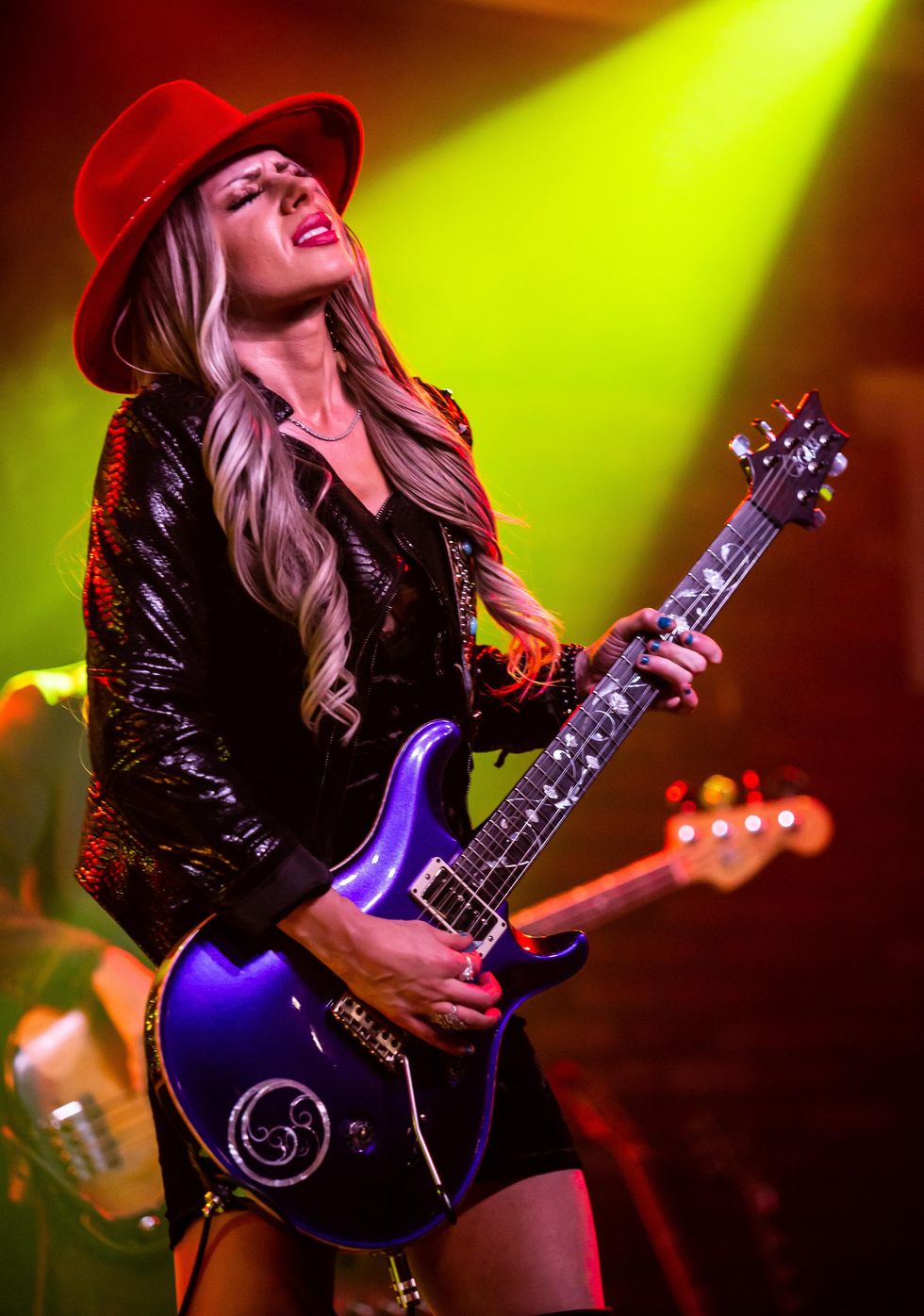
Orianthi fingerpicks her signature PRS Private Stock Custom 24 at the Coach House in San Juan Capistrano, California, on January 26, 2023.
Photo by Brad Elligood
Recorded at the iconic Sunset Sound studio in Hollywood, Rock Candy is Orianthi’s most stylistically diverse effort to date. While there are many moments of heavy guitar, particularly on tracks like “Light It Up,” with its infectious boogie riff, and “Getting to Me,” “Fire Together,” and the album closer, “Illuminate, Pt. II,” where Orianthi’s guitar solos sizzle, the album offers more than just fretboard pyrotechnics. “That’s why it’s called Rock Candy,” says Orianthi. “Everyone thought I covered the Sammy Hagar song, which I love, mind you—it’s a great song. But it really sums up the whole record. There’s a little bit of rock, a little bit of pop, it’s kind of sugar-coated, then there’s like really heavy and weird and edgy. It’s a vibe that we went for. We wanted something that was in the moment and not overthought. Keeping that childlike outlook really helped sometimes.”
Orianthi was raised in a household where music was a religion. Her dad, a gigging guitarist, reveled in a mix of rock and blues with Hendrix, Clapton, and Santana in heavy rotation, while her mom put on the Top 40 every Sunday morning. Orianthi is often classified as a rock guitarist, but she’s also worked with a lot of pop artists from Jason Derulo to Anastacia, and that pop influence seeped heavily into this new album. Songs like “Where Did Your Heart Go” have a distinct commercial feel with Orianthi’s vocals belting out honest, heart-on-sleeve lyrical content inspired from diary entries, which were written during some trying times in her personal life. “I’m a fan of a great pop song. I started as a songwriter listening [to everyone from] Elvis Presley to Roy Orbison to the Beatles. The Beatles are incredible songwriters, but they wrote pop songs, too, you know? That’s where my love of just writing came from. I was like 6 years old, listening to that and my mom’s pop collection,” she says.
Orianthi’s Gear
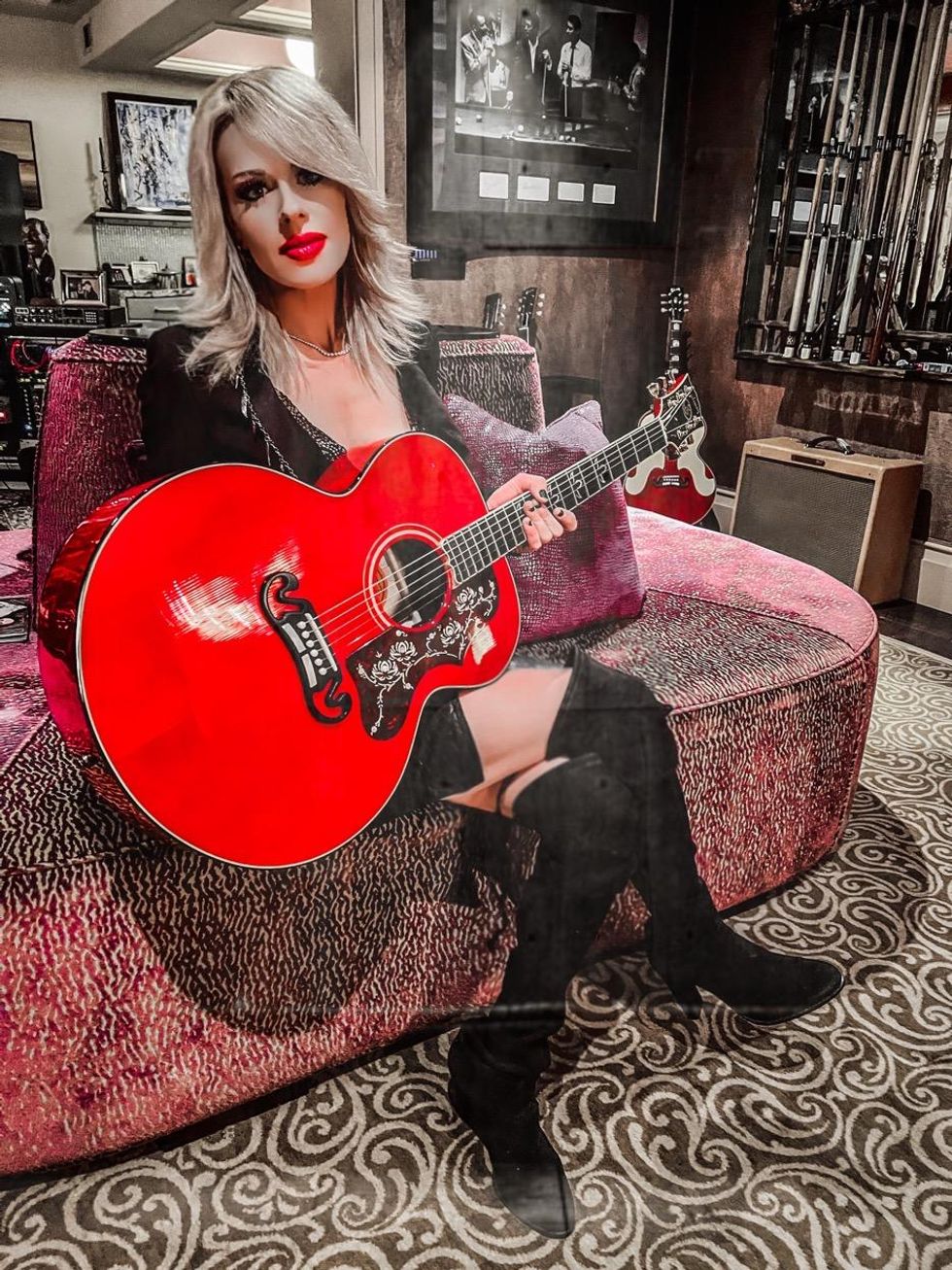
For Orianthi’s signature Gibson SJ-200 acoustic, she requested the neck profile from an ES-345 and designed the custom pickup with LR Baggs.
Photo by Richie Sambora
Guitars
- PRS Private Stock Custom 24 Blooming Lotus Glow Signature Model
- Gibson SJ-200 Signature Model
- 1963 Fender Stratocaster
Amps
- Orange Signature Combo
Which begs the question: If the powers that be elected to transform and market Orianthi as a pop star, say, in the Billie Eilish mold, would she forsake the guitar? “No, no [laughs]. I can’t leave my guitar alone. Guitar is always going to be part of the deal. That’s for sure. For myself right now, where I’m moving into, it’s a different sort of journey and who knows what could happen in the future. My heart’s open, my mind’s open all the time, you know? Having that single, ‘According to You,’ that was a multi-platinum pop hit for me in 2010 that reached around the world. That was awesome to have that success with a pop song. And then I go, ‘Okay, that was cool and I’ve done that, but moving forward….’”
Always looking for new inspiration, Orianthi has recently been exploring the sounds of jazz artists. “I’ve been listening to Coltrane and stuff like that that’s out of the box, because if you try to play those melodies on guitar, it’s weird and it’s cool,” she says. “You listen to any Hendrix live performance. It’s not perfect, it’s never completely perfect, but it is perfect because it takes you on this colorful journey. I find it to be like light energy, where you’re not completely grounded and thinking of stuff you’ve done before. It’s just like moving forward. For me, as a guitar player, I want every performance to be better in the sense of the choice of notes and the melodies I’m coming up with. More out-of-the-box stuff, that’s important to me.”
“My dad took me to a Santana show and I was like, ‘That’s it! I’m giving up classical, I’m done with it.’ He played ‘Europa’ and those opening notes just hit me like lightning.”
Tracks like “Living is Like Dying Without You” feature a recent addition to Orianthi’s gear arsenal—her new signature Gibson SJ-200 acoustic. She was drawn to the J-200 because of its connection to Elvis and Johnny Cash. “I love the sound of a J-200 because it’s like a grand piano, it fills the room. I had a choice of other guitars when I went to Montana to create my model. Like, ‘Why would you choose a J-200? It’s massive.’ But why wouldn’t I? It sounds so good,” says Orianthi, who loved the guitar but had some reservations about its boat-sized neck. Later, at the Gibson showroom in Hollywood, she picked up a guitar that turned out to be the ES-345 that Bradley Cooper used in A Star is Born. After trying out this easy-to-play instrument, she requested an unexpected modification from Gibson for her signature axe.
“I was like, ‘Could we put an electric guitar neck on it?’,” she recalls. “They were like, ‘Yeah, we can do that. This is probably the first hybrid acoustic-electric we’ve done at Gibson.’ I’m like, ‘Why not, let’s do something different.’” Gibson mated the neck from an ES-345 to the SJ-200, and the result is a rich-sounding acoustic with the playability of an electric.
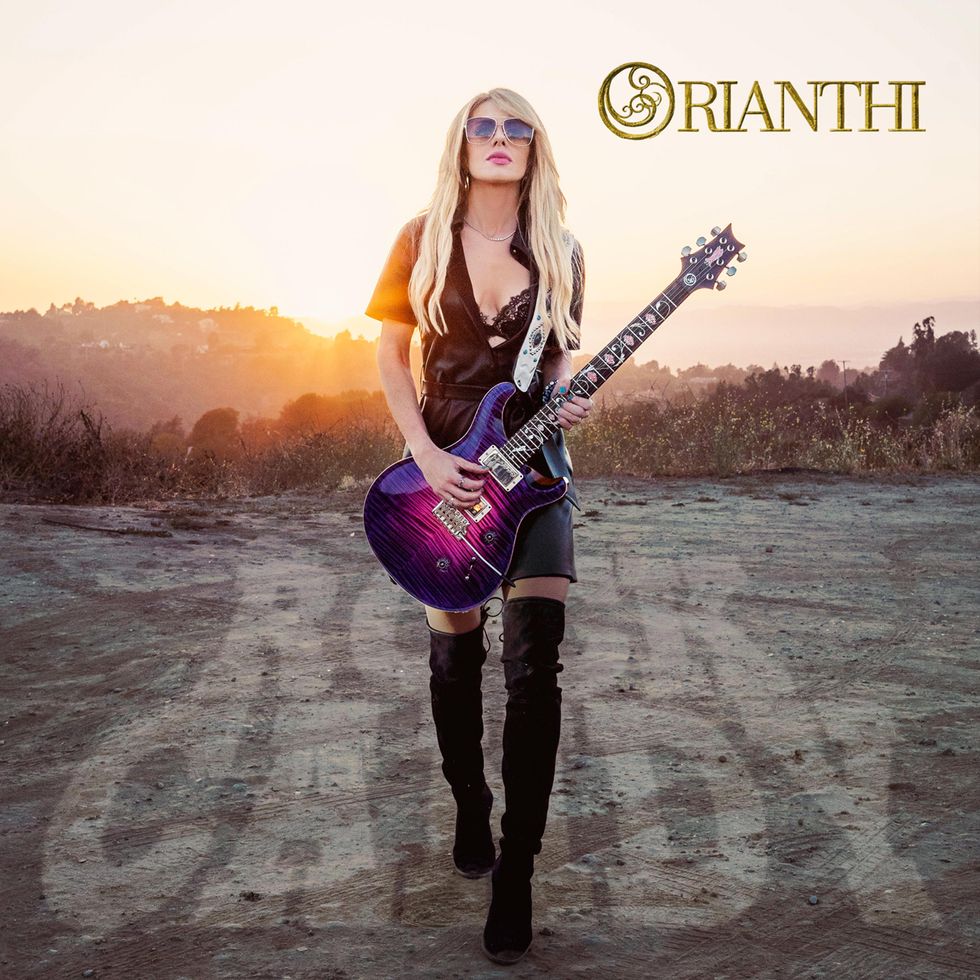
A lot of back-and-forth also took place in designing the custom pickup for her signature SJ-200. “I wanted to have a guitar where if you had a DI, the soundman could be passed out, high, or drunk and you would still sound good,” says Orianthi. “I modified that with LR Baggs, so there’s more midrange and compression. We actually adjusted the sound of the pickup by going back and forth with an LR Baggs acoustic pedal, over FaceTime and Zoom saying, ‘Modify this or modify that.’ That’s how the whole pickup system was created.”
For electric guitars, Orianthi’s signature PRS is her main instrument. The meticulously crafted instrument carries a steep price tag, retailing around $11,700. But a more accessible version may be on the horizon soon. “We’re in talks right now. Probably an SE model coming of that one,” reveals Orianthi. “Because a lot of people wanted to buy it and they couldn’t afford it. It’s very expensive, but it’s very well made. That is a dream guitar that was brought to life by the PRS team. Paul has really dialed it in. He picks the right woods, and everything is quality. They’re like Porsches [laughs], you know what I mean?”
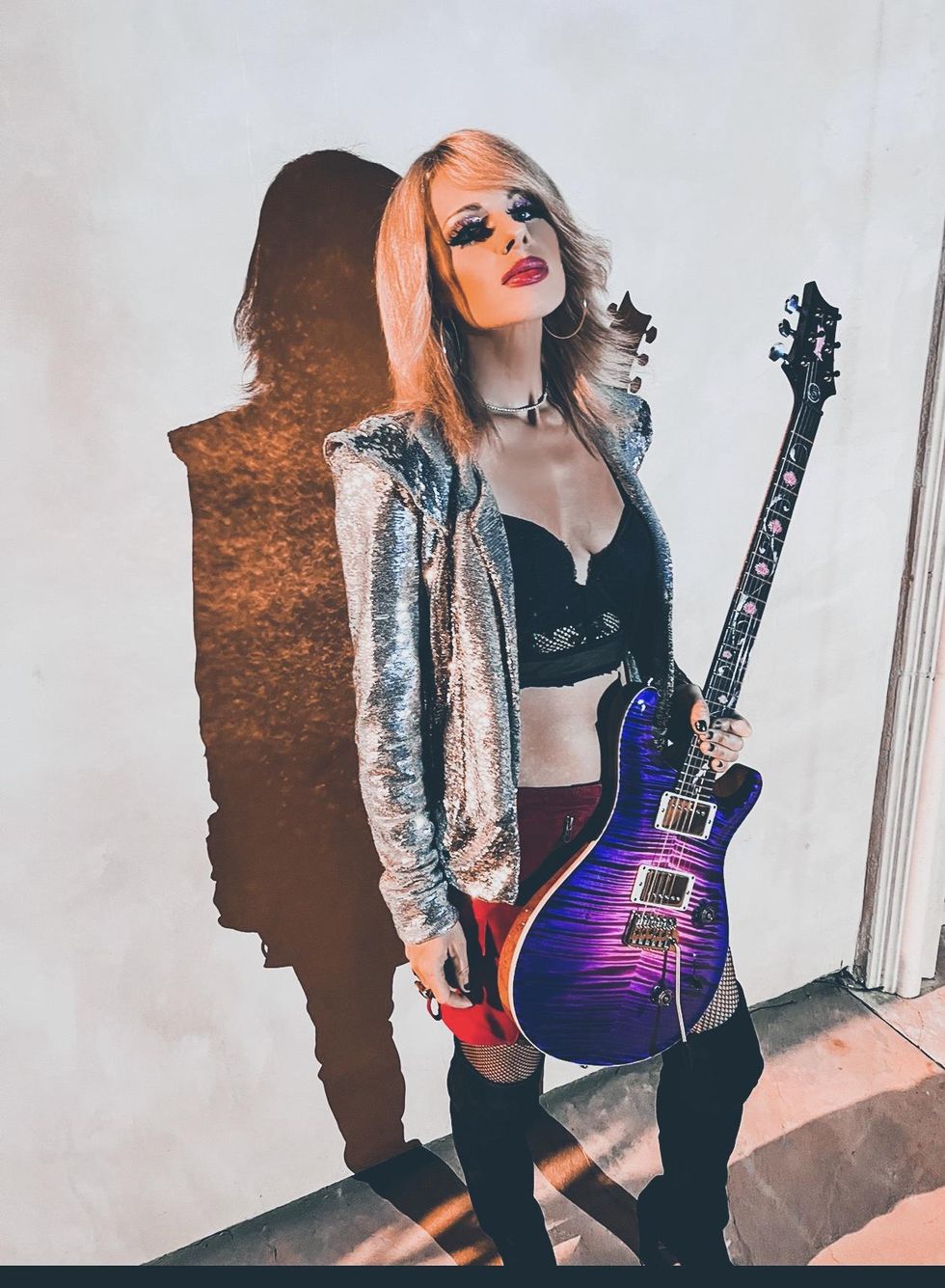
When it comes to electric guitars, Orianthi sticks to her “dream guitar,” her PRS Private Stock Custom 24 Blooming Lotus Glow signature model. “They’re like Porsches [laughs],” she says.
Photo by Richie Sambora
For both her acoustic and electric playing, an interesting aspect of Orianthi’s style is that she often eschews picks, opting instead to use her right-hand fingers to articulate single-note lines. This technique has its origins in Orianthi’s formative years.
“I started classical at TAFE University when I was 10 and that was really boring, but my dad was like, ‘You should probably do this, and learn theory.’ I learned theory and got past two or three, I think, and passed really well, but I got major headaches from that stuff. My teacher was weird, and it was just boring. I didn’t like it very much at all. Then my dad took me to a Santana show and I was like, ‘That’s it! I’m giving up classical, I’m done with it.’ He played ‘Europa’ and those opening notes just hit me like lightning and I went, ‘There’s something there.’ I learned probably every Santana song. I watched Carlos play a lot; he doesn’t always use a pick. Especially sometimes when you want the note to sound a little sweeter and have less attack. But then to be honest with you, I lose my picks so much that I learned to play without a pick because there’s like this vortex of socks and guitar picks somewhere, all of mine that go missing. I get bowls of guitar picks and they just go. I don’t know if my cat eats them [laughs].”
Orianthi's New Album "Rock Candy" is out now!!!
In a pared-down duo situation, Orianthi gets sweet sounds using her pick-hand fingers to articulate melodies on a PRS hollowbody.
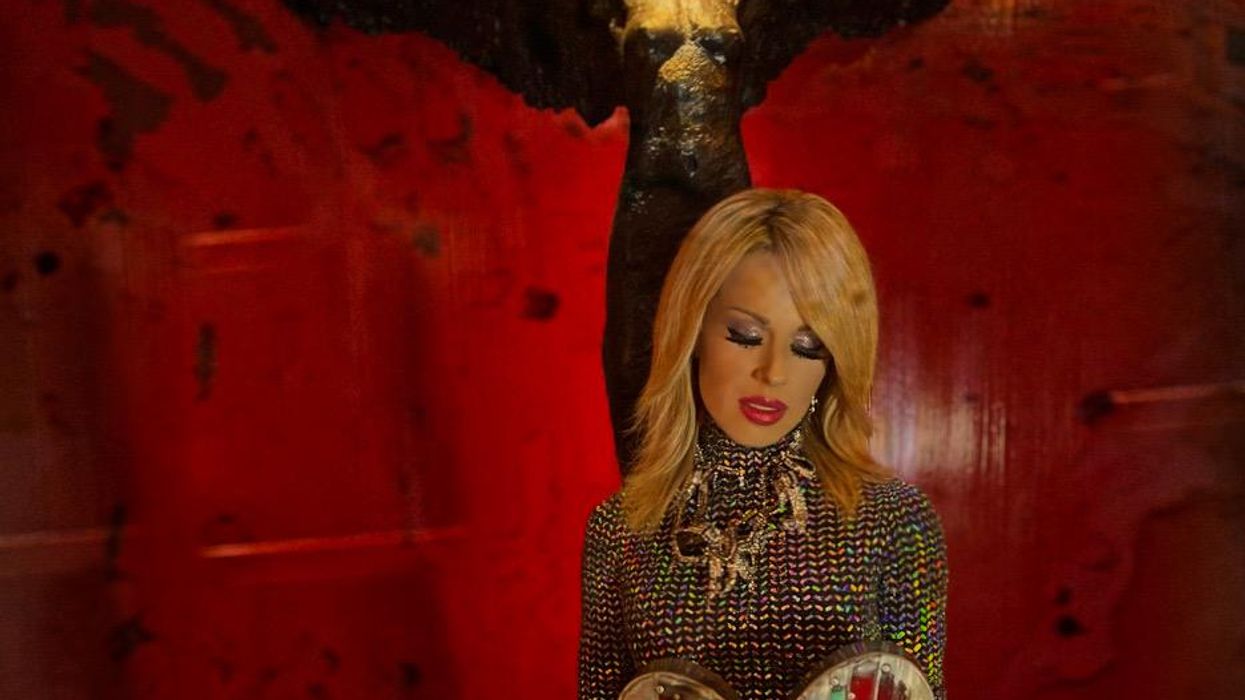

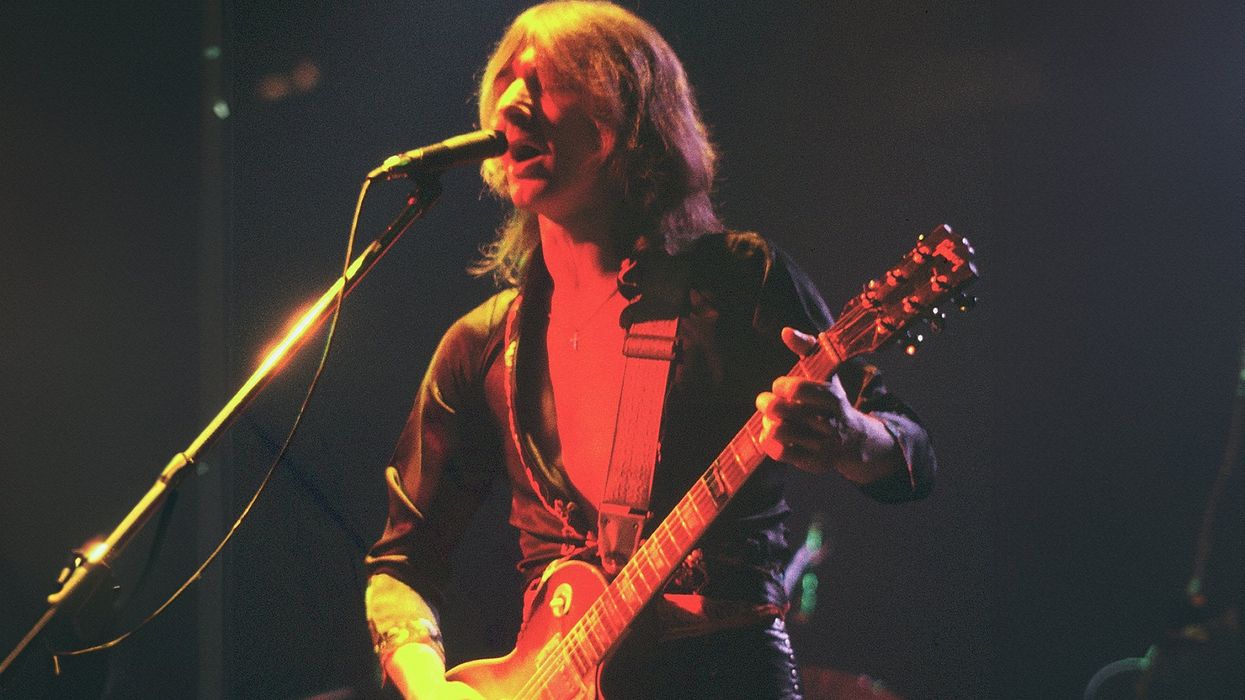
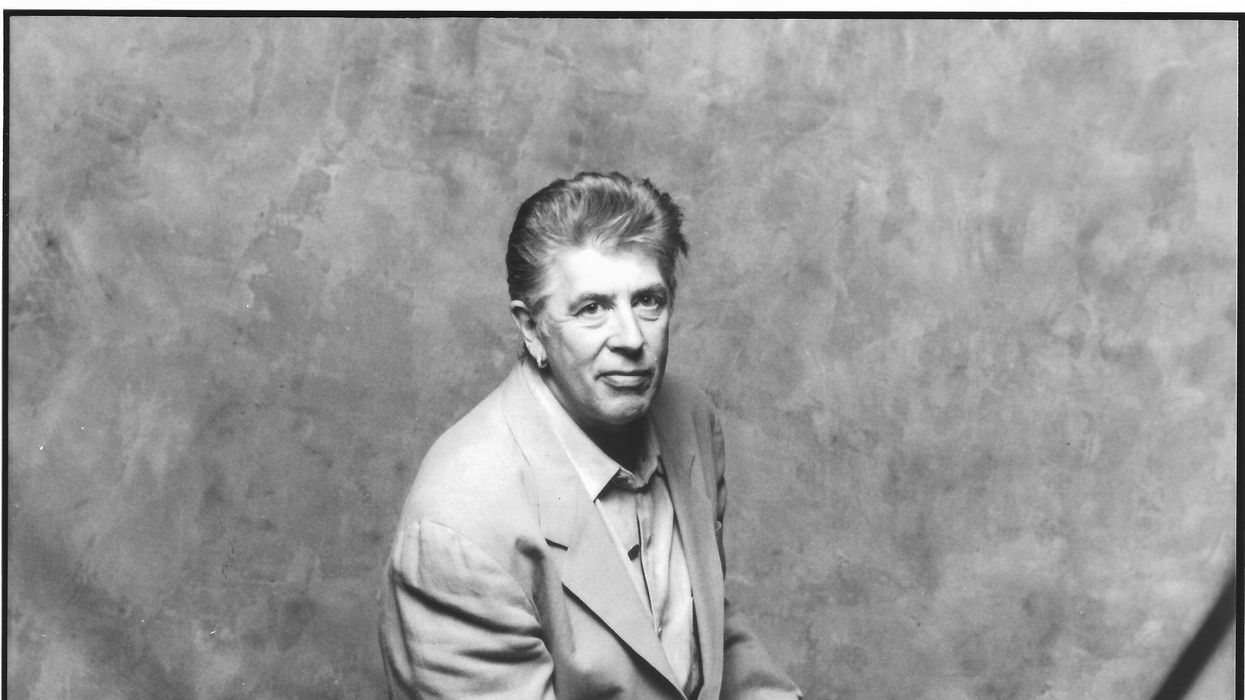
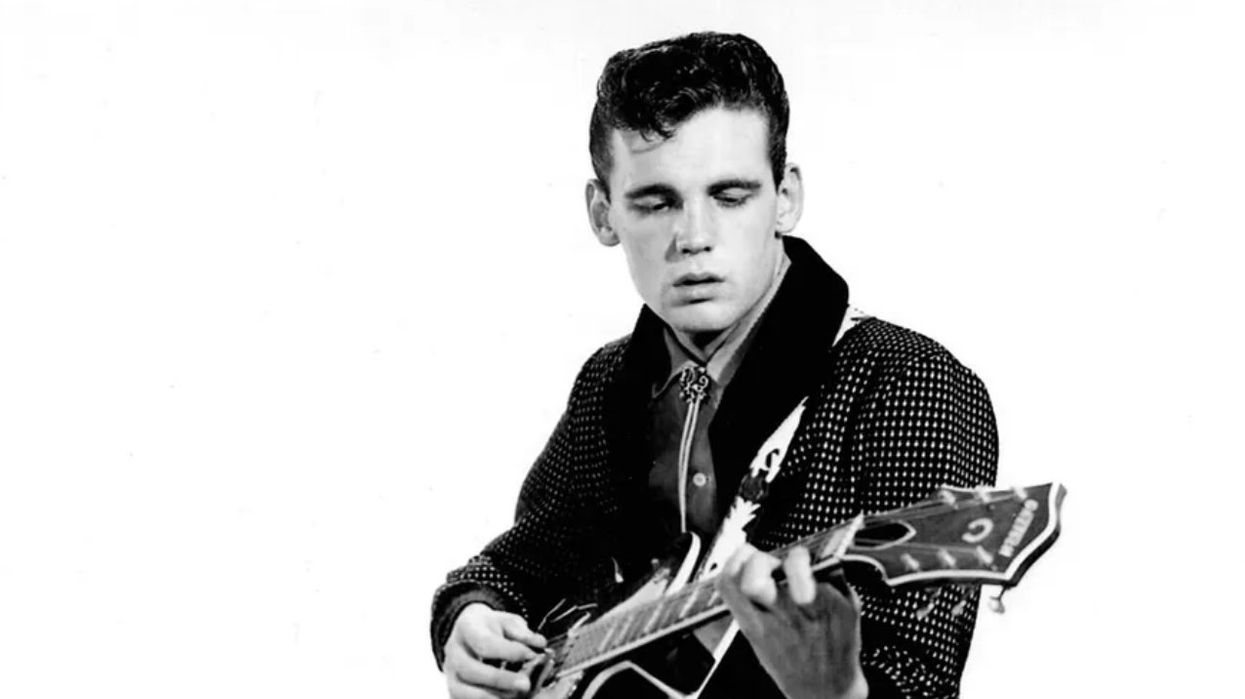
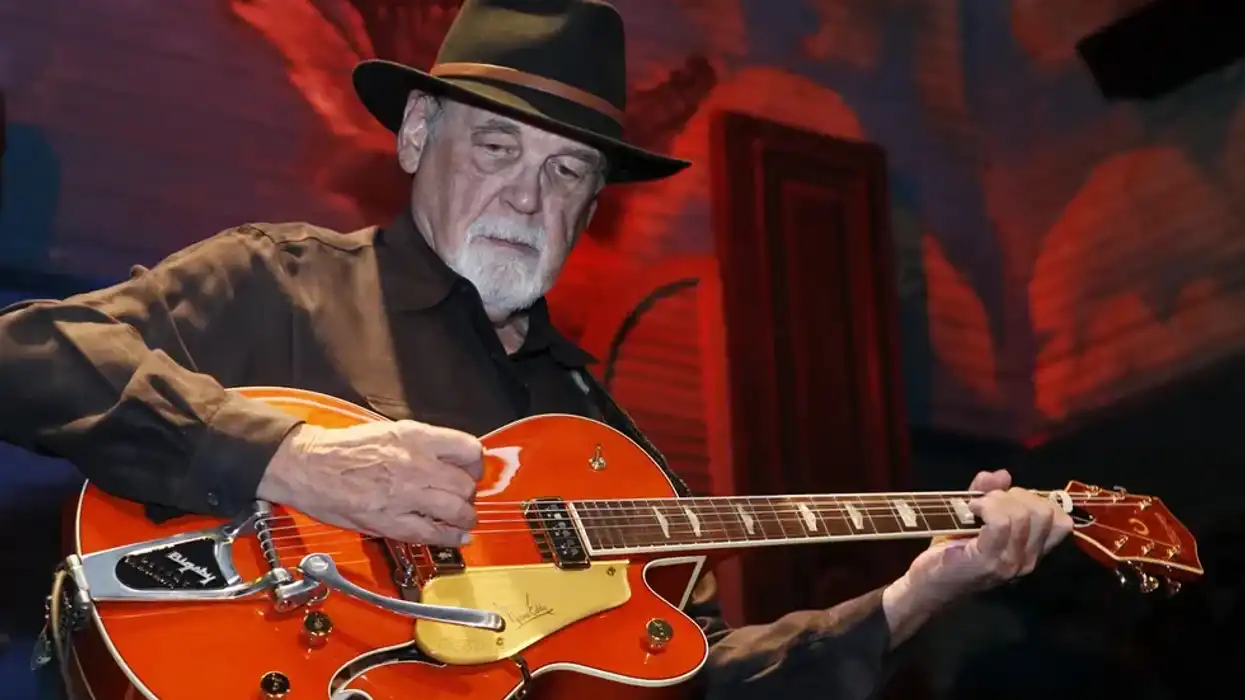
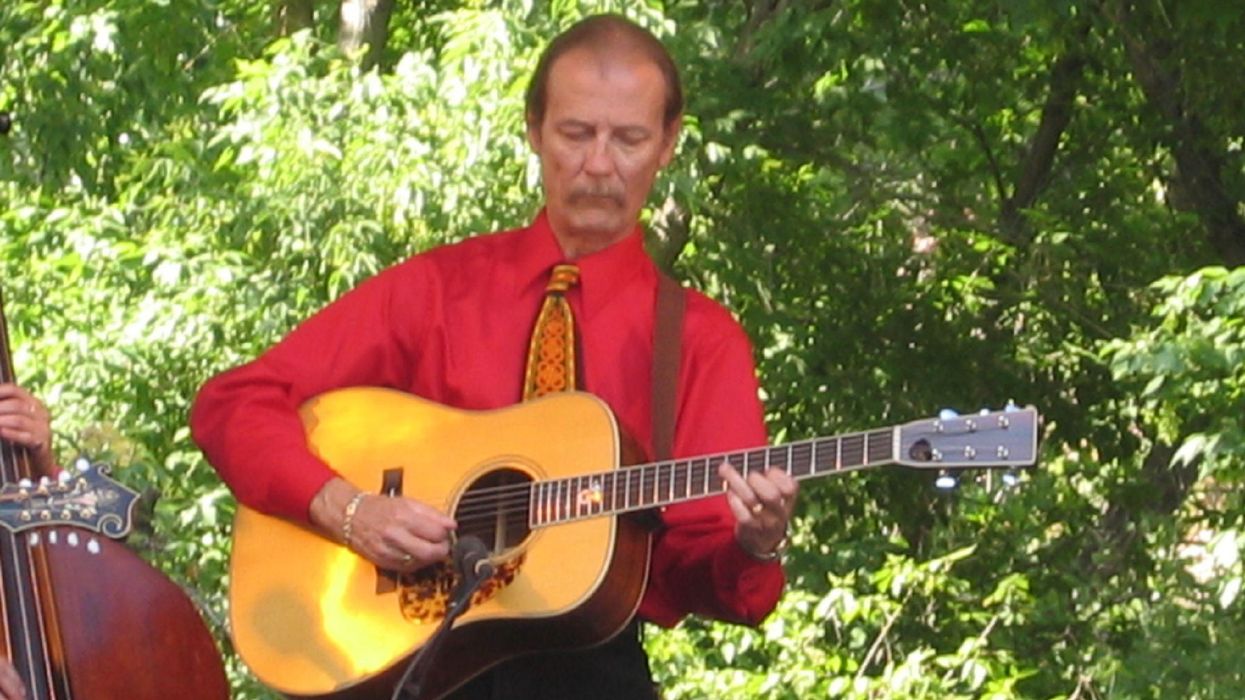
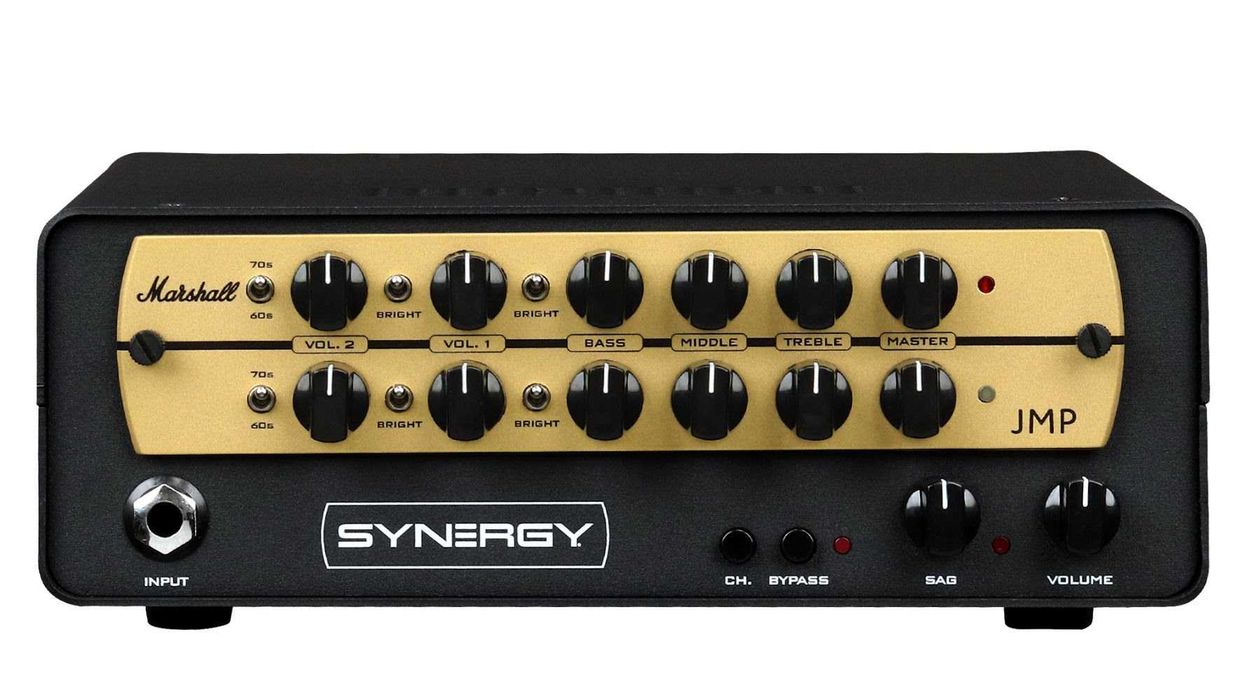
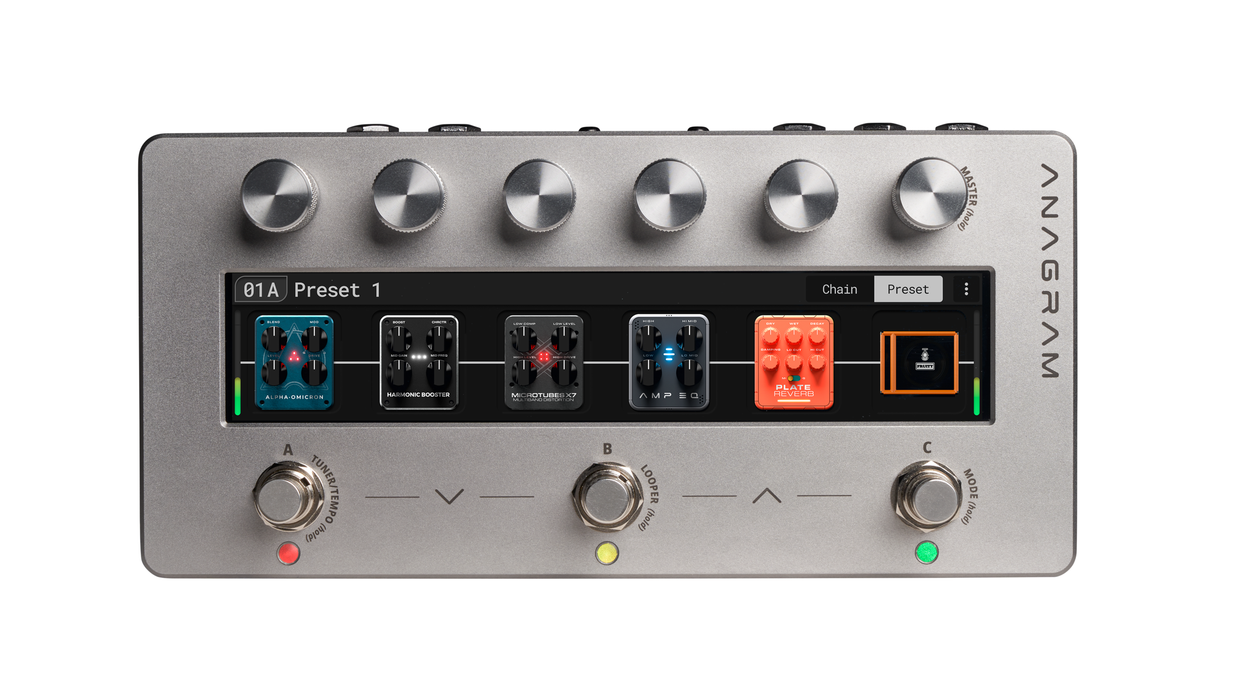

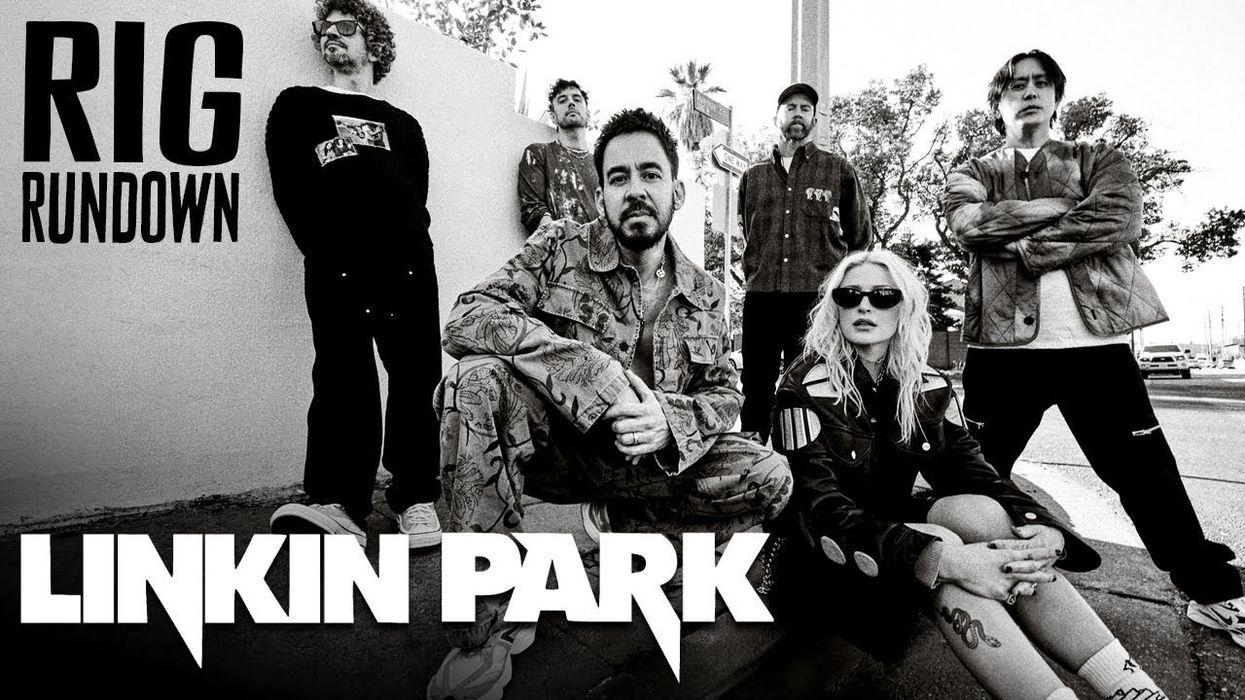

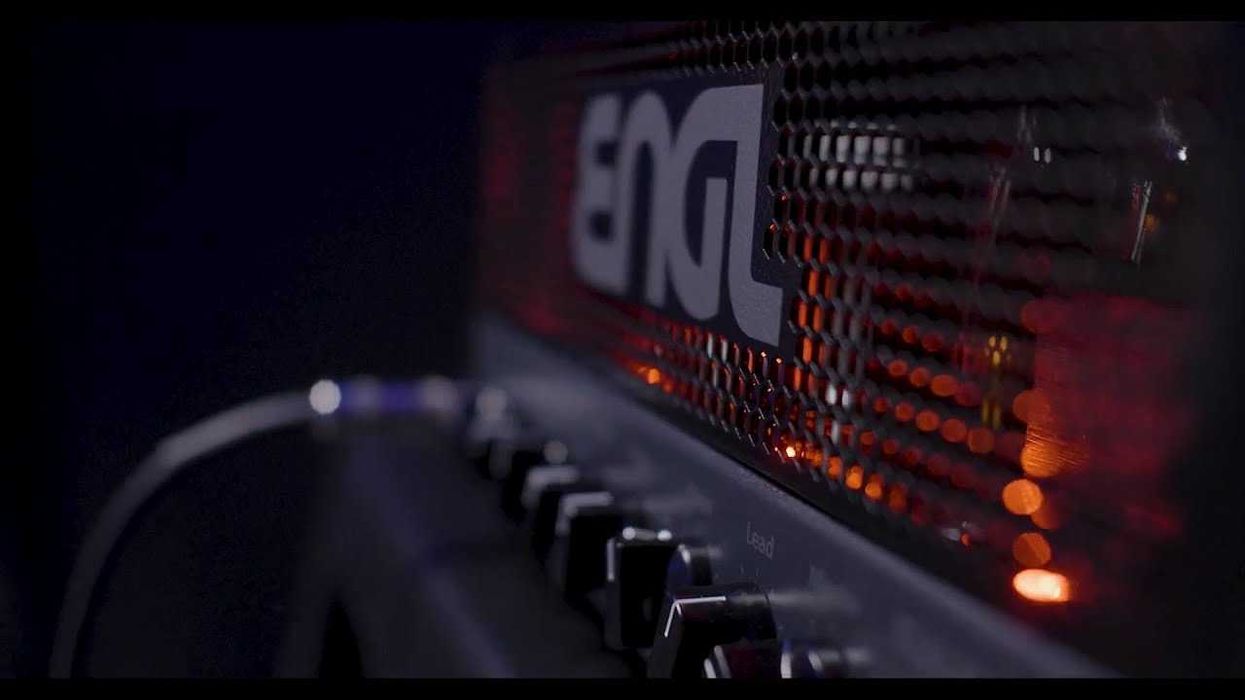
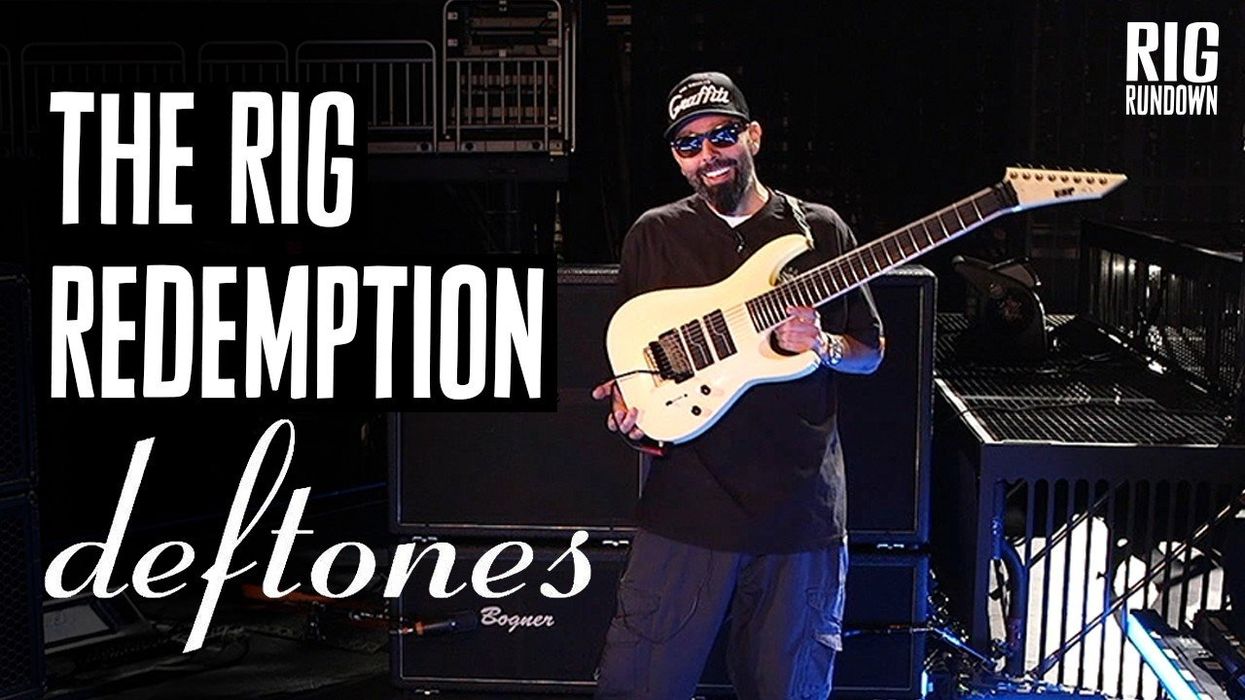










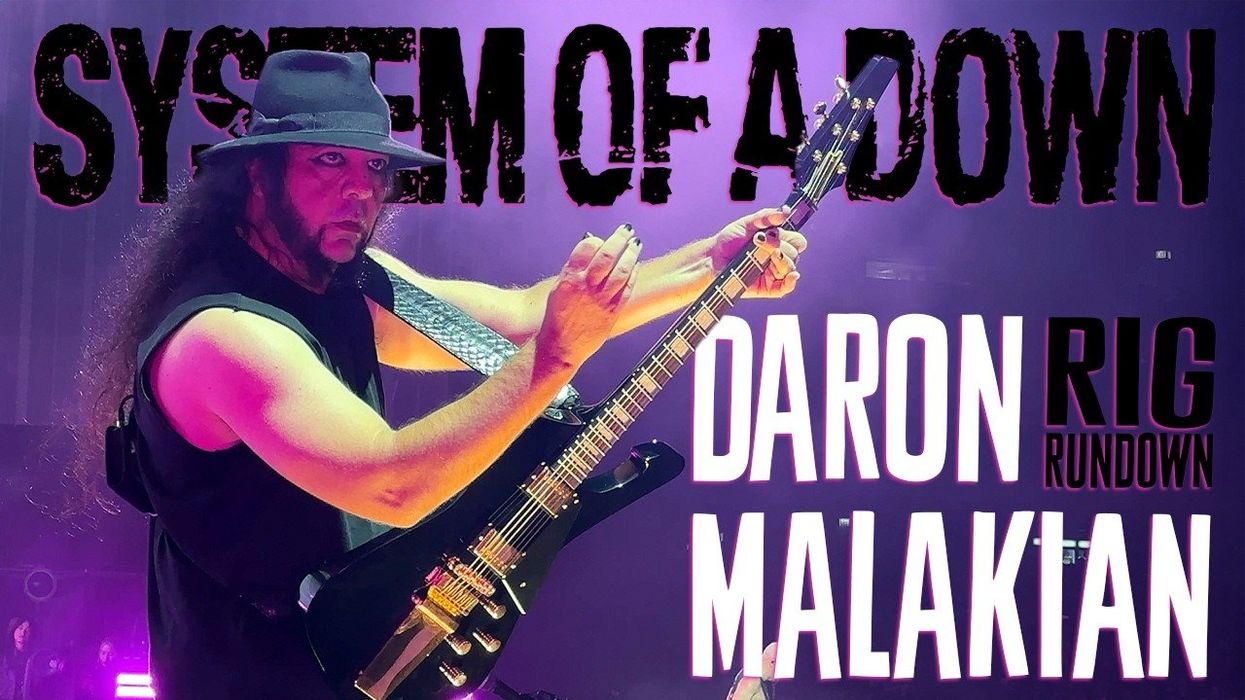
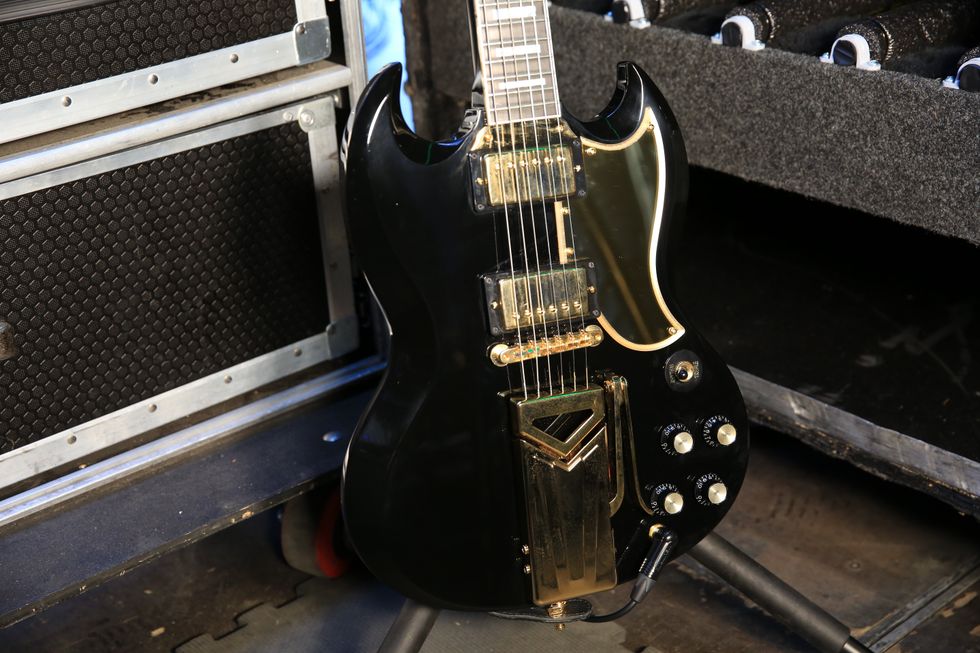
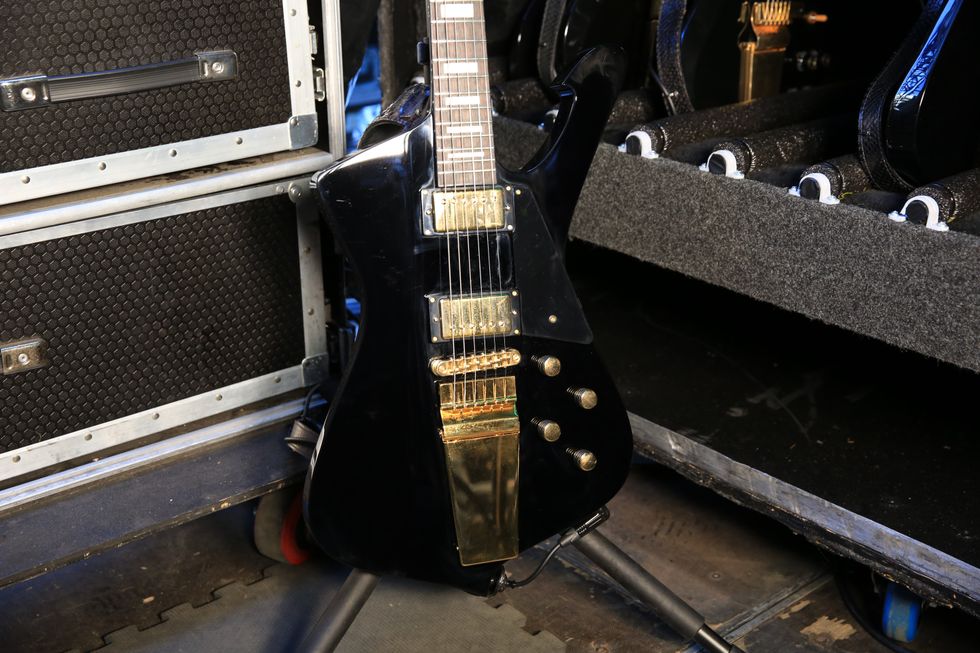
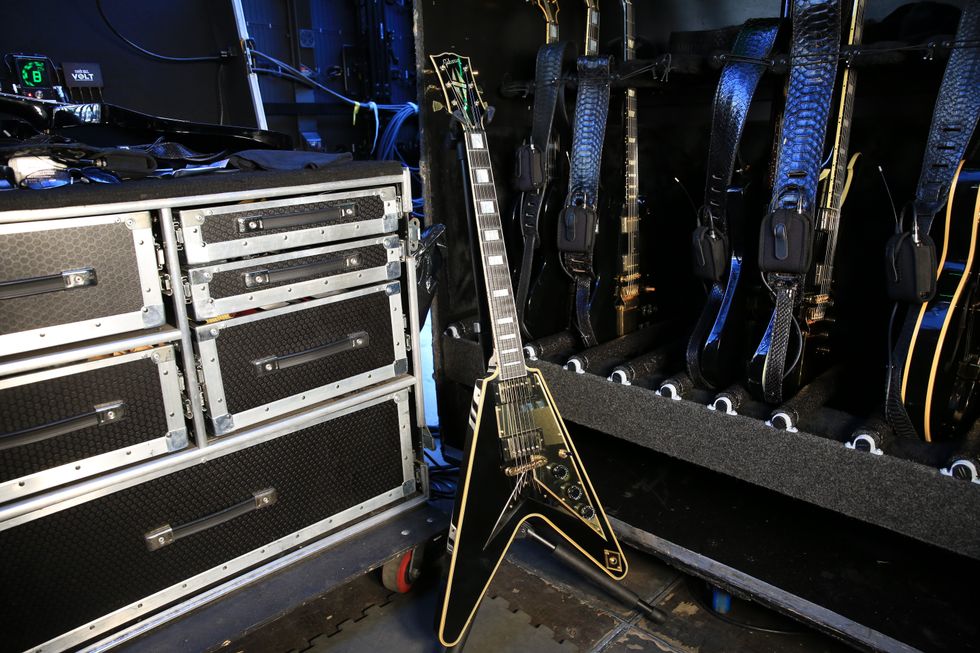
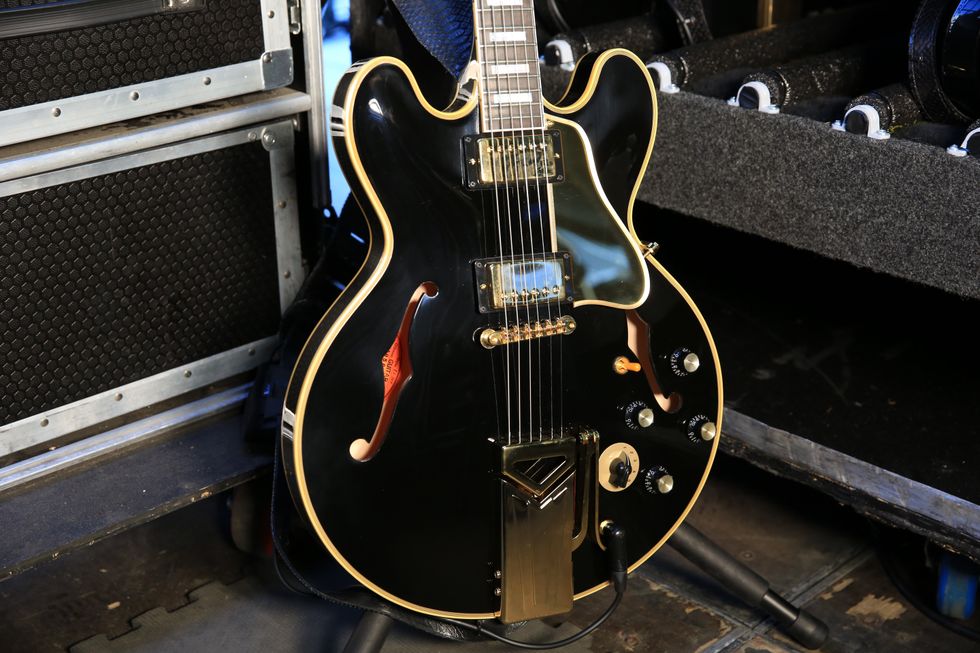
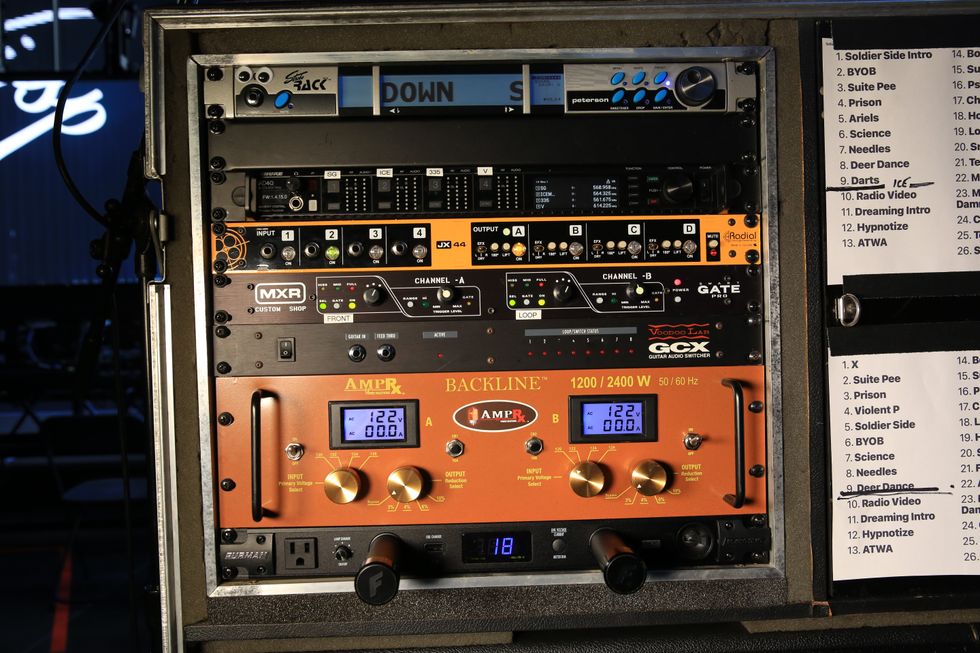

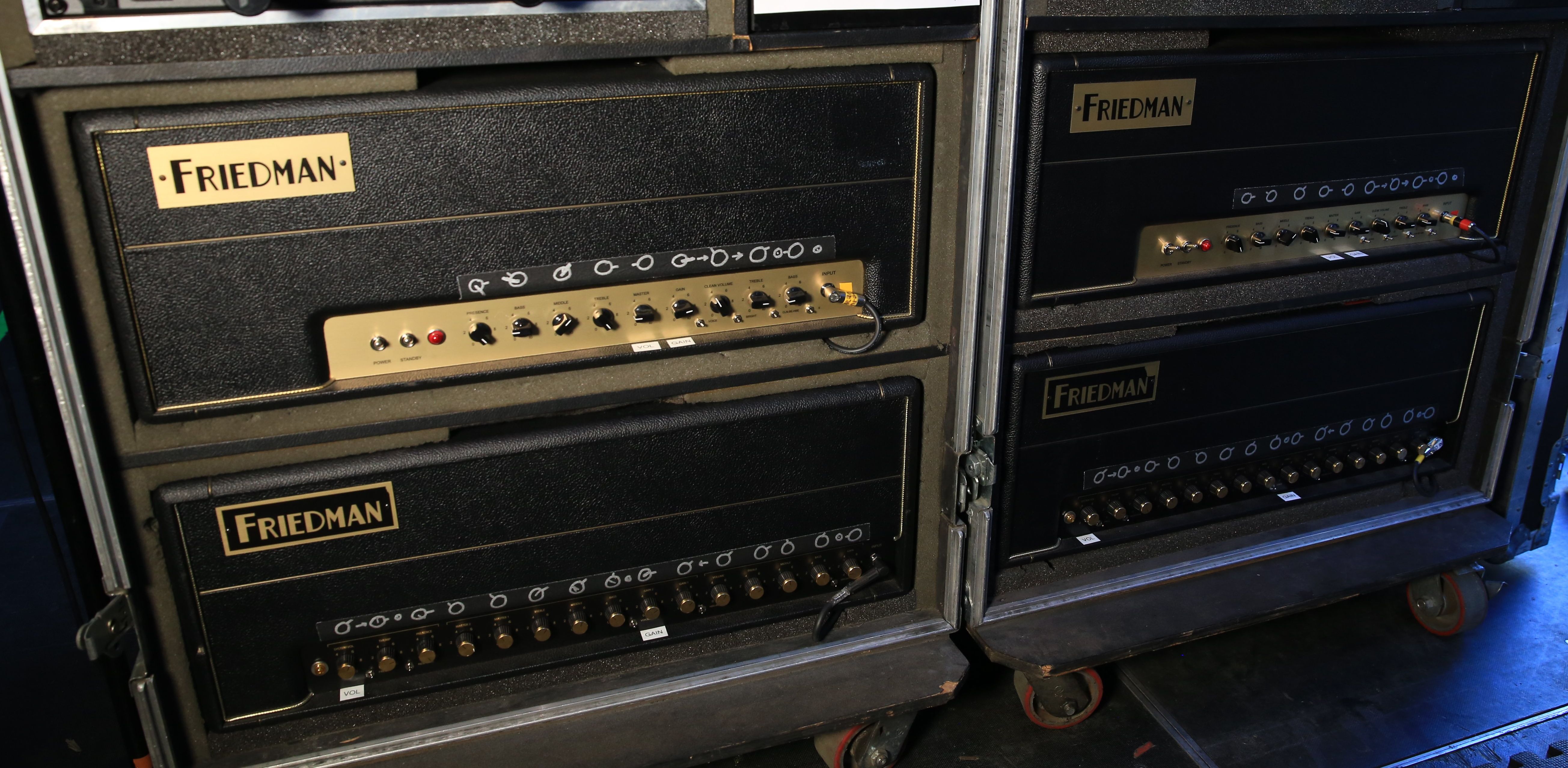
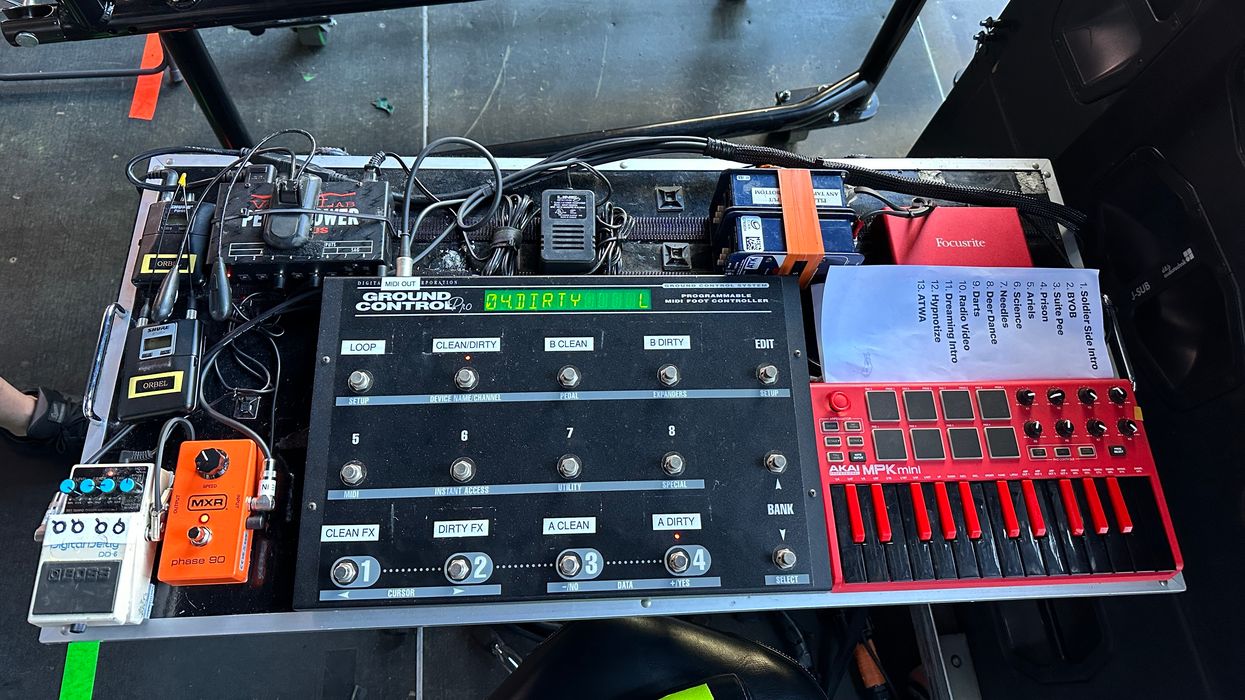

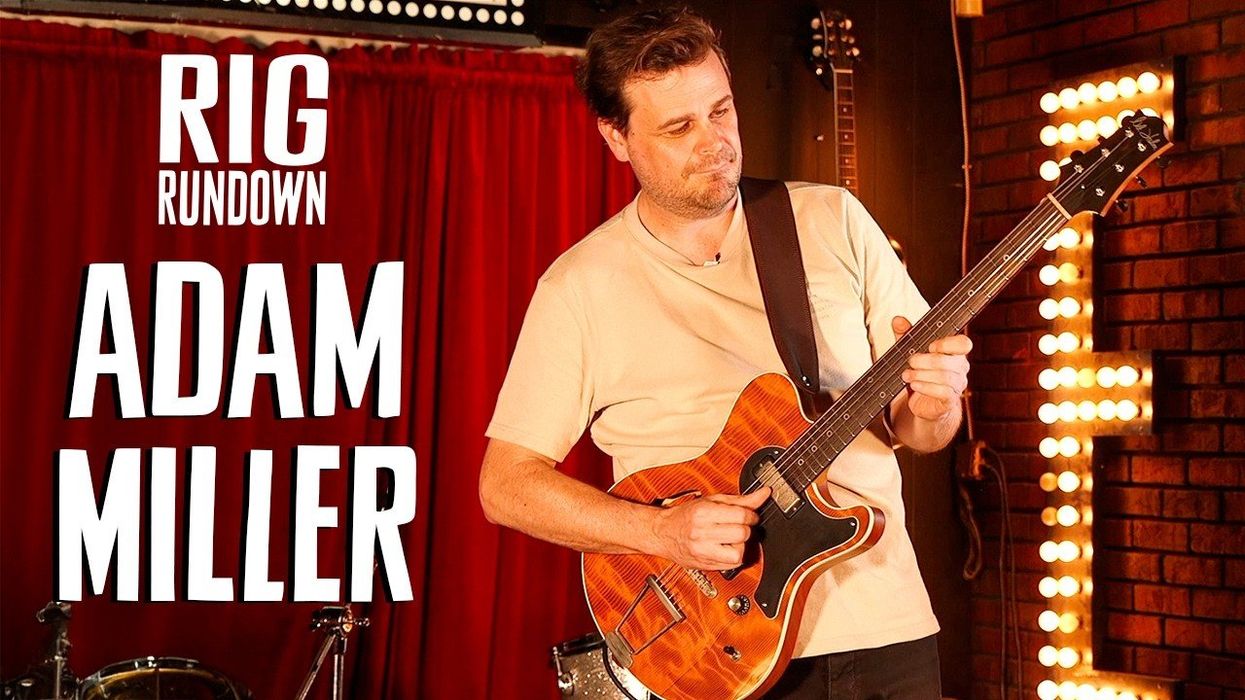
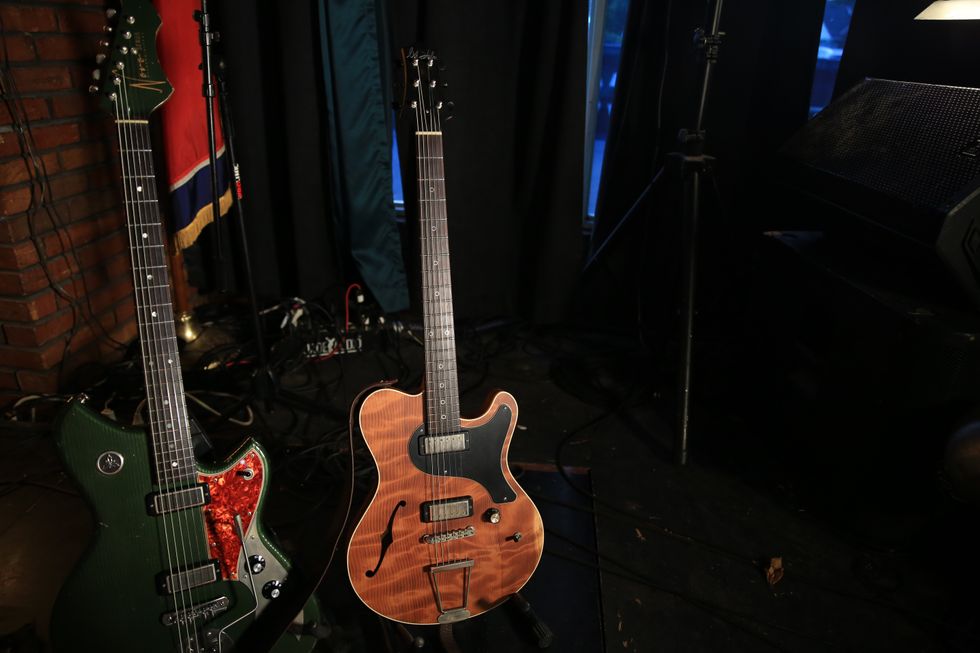
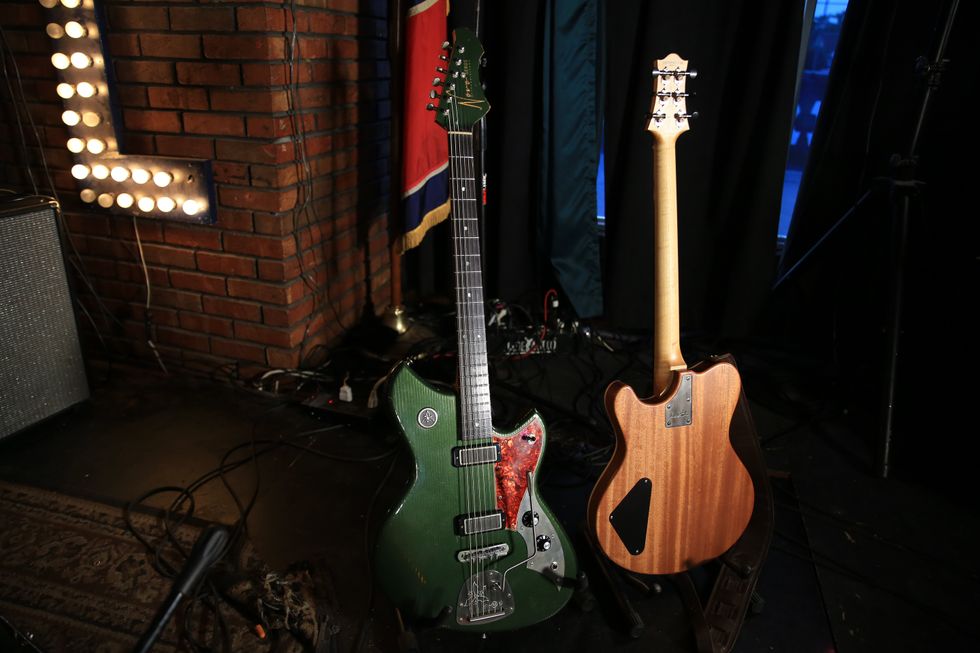
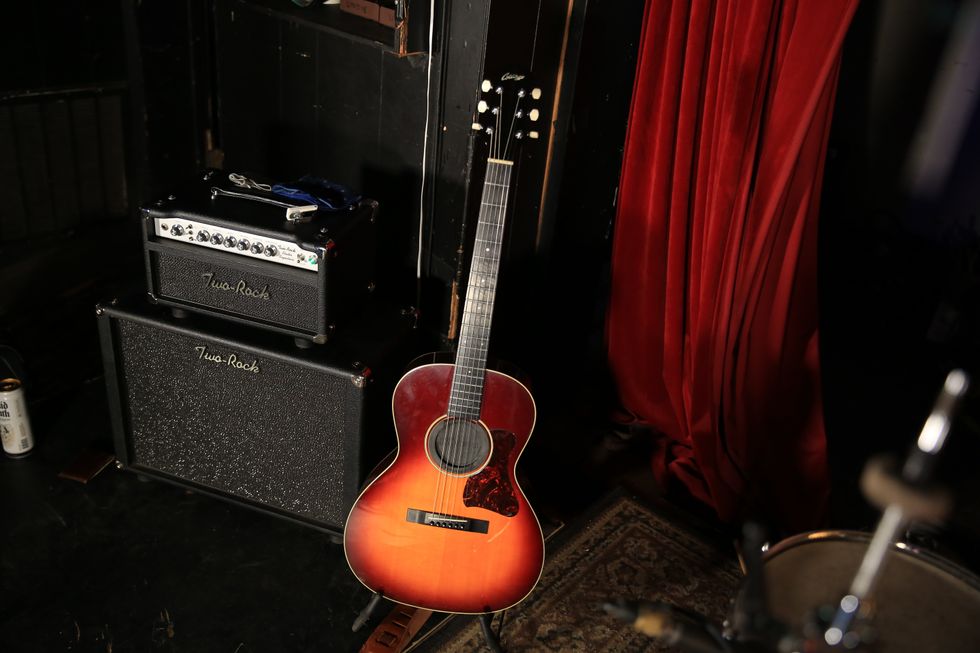

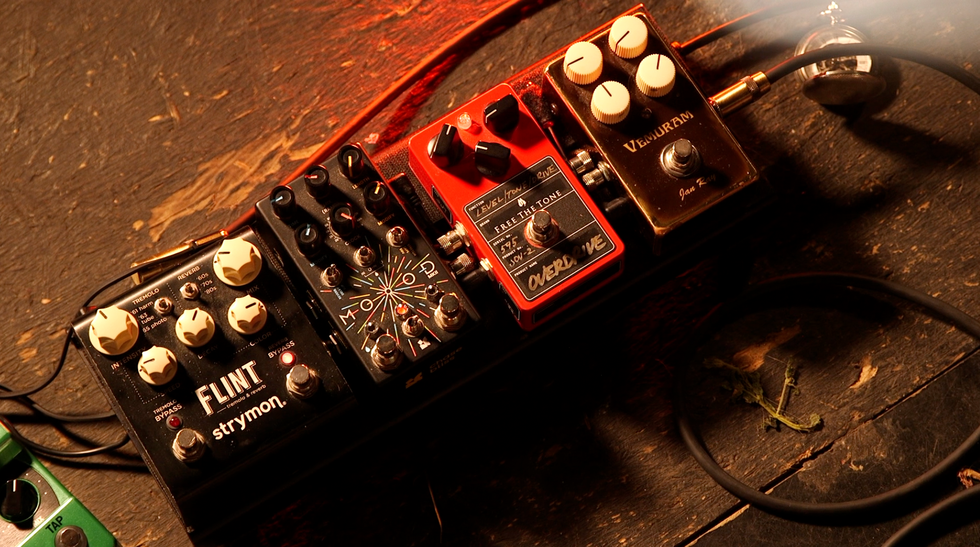
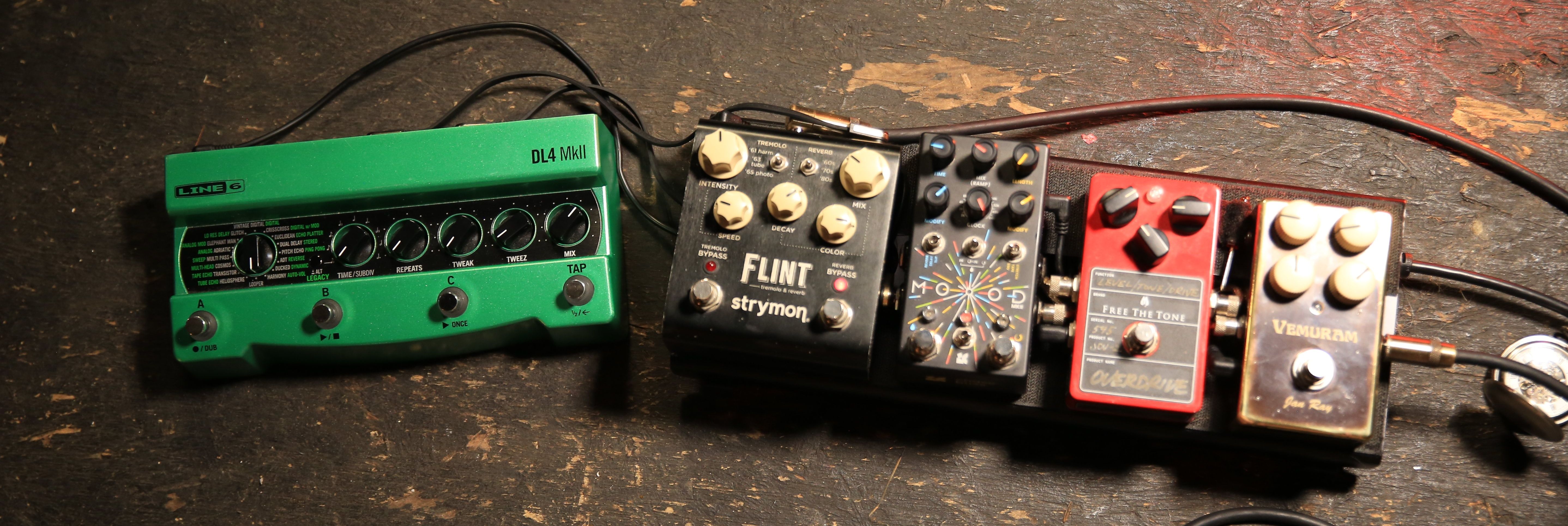 Miller’s Collings runs into a Grace Design ALiX preamp, which helps him fine-tune his EQ and level out pickups with varying output when he switches instruments. For reverb, sometimes he’ll tap the
Miller’s Collings runs into a Grace Design ALiX preamp, which helps him fine-tune his EQ and level out pickups with varying output when he switches instruments. For reverb, sometimes he’ll tap the